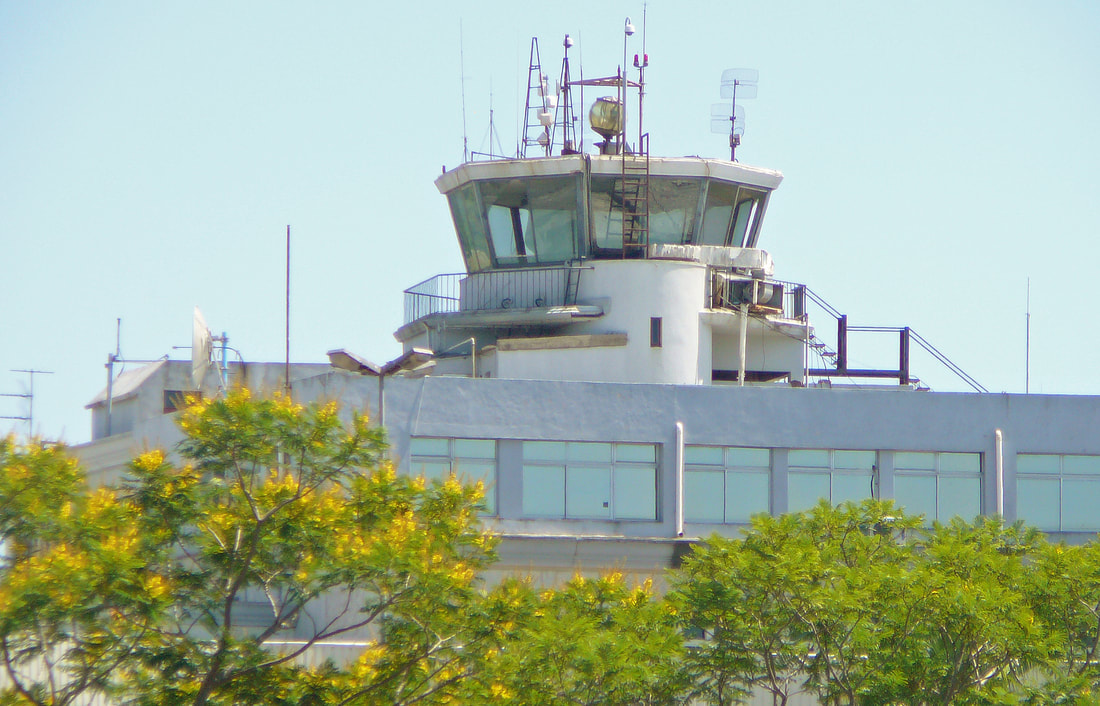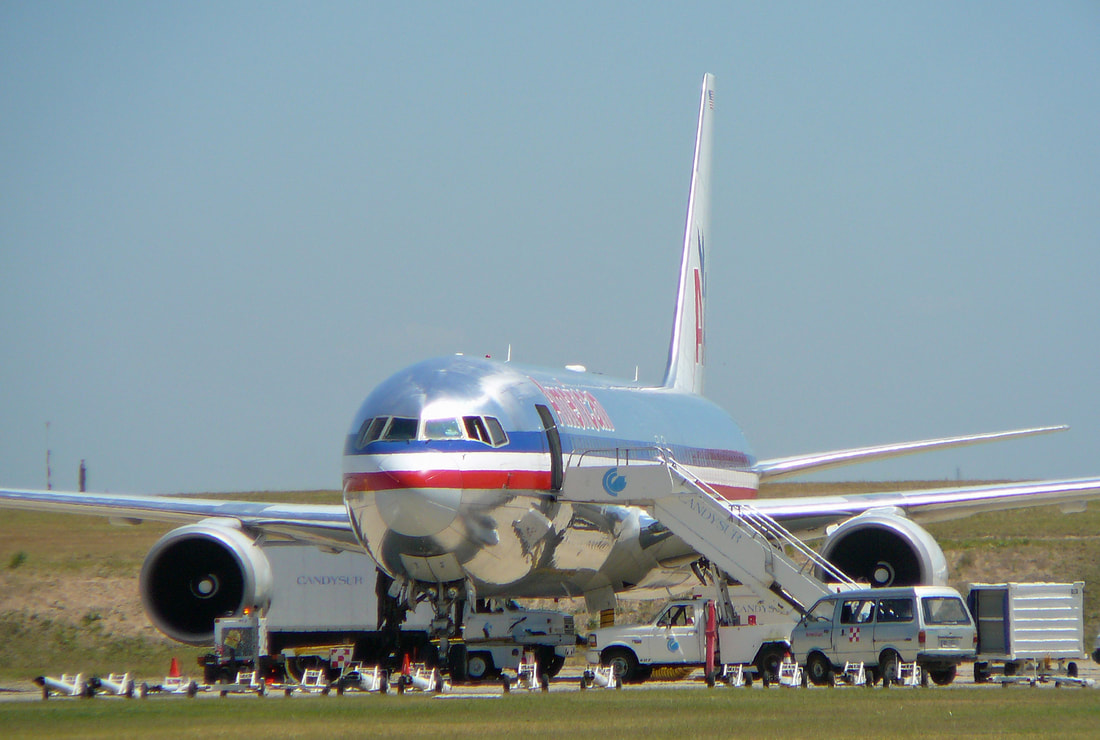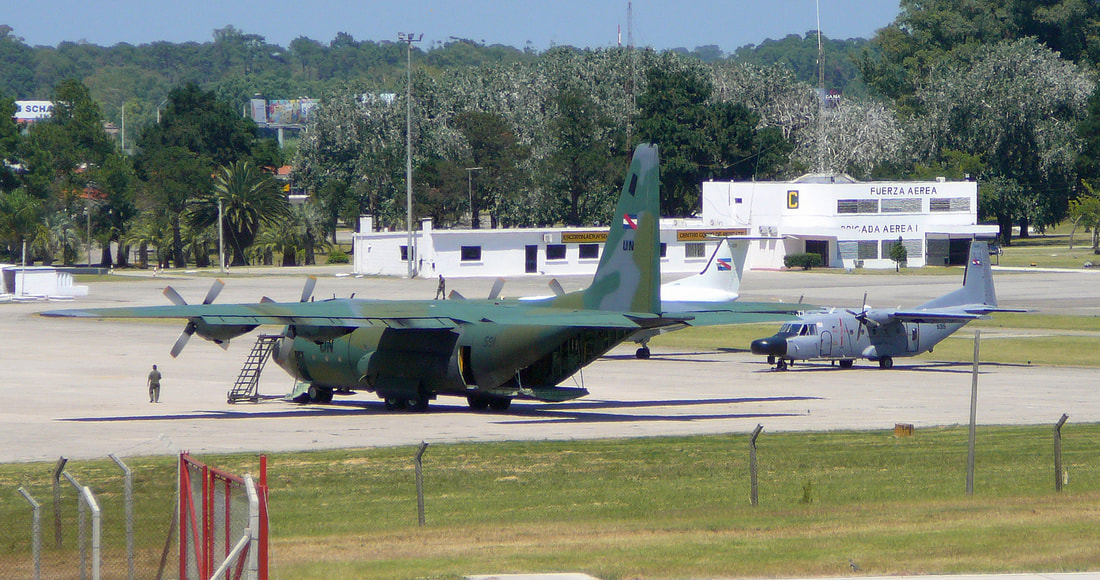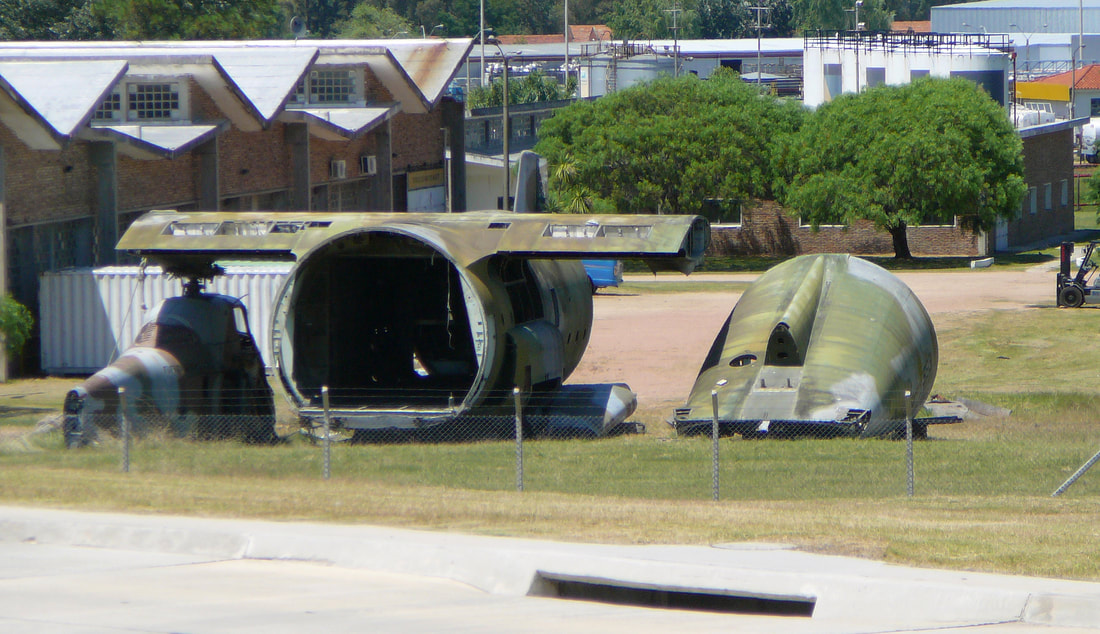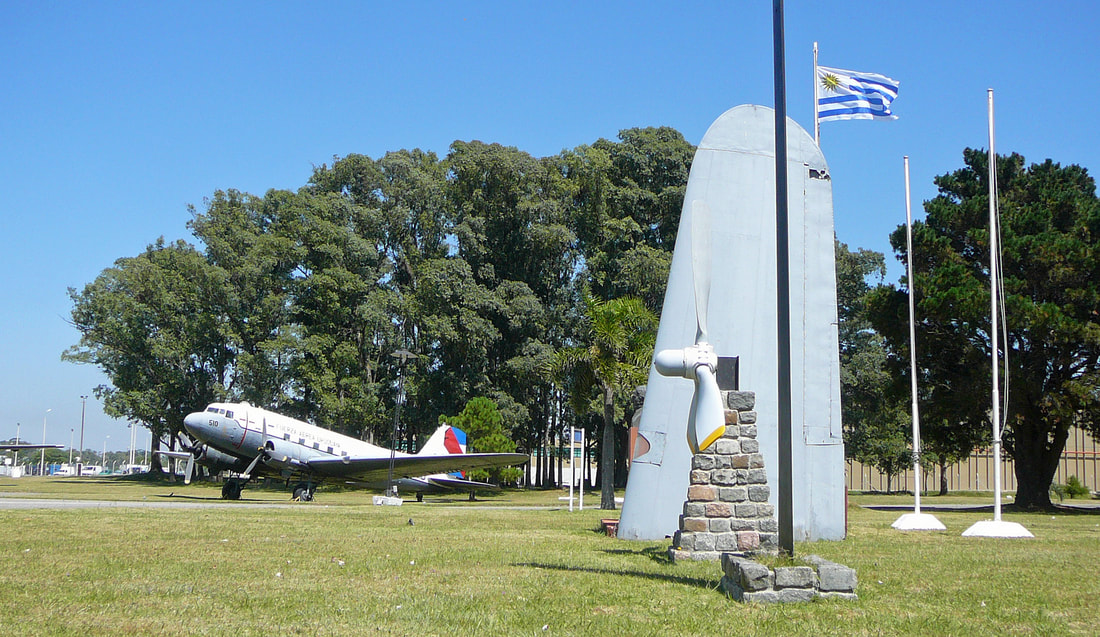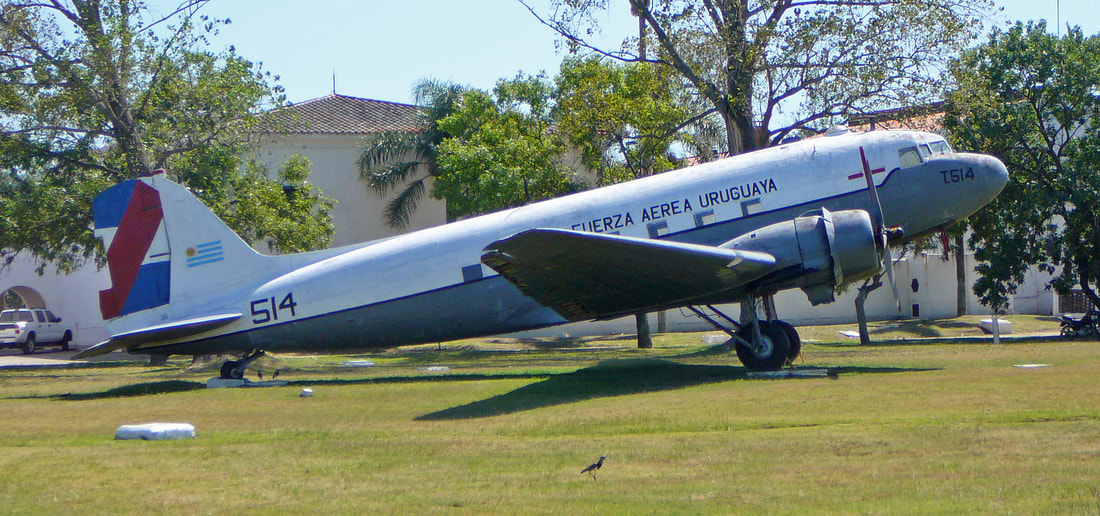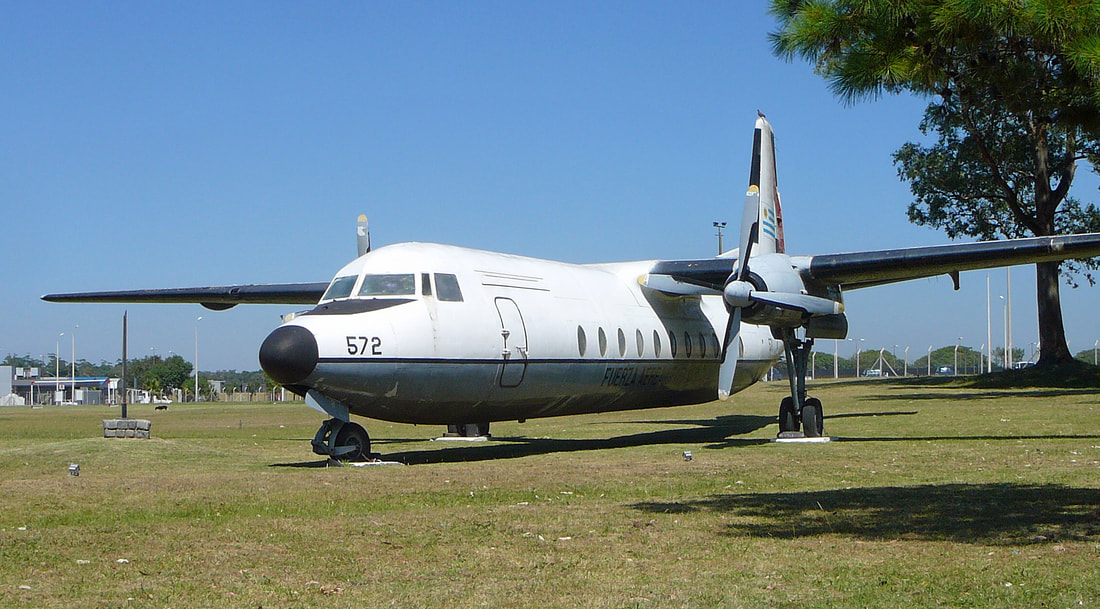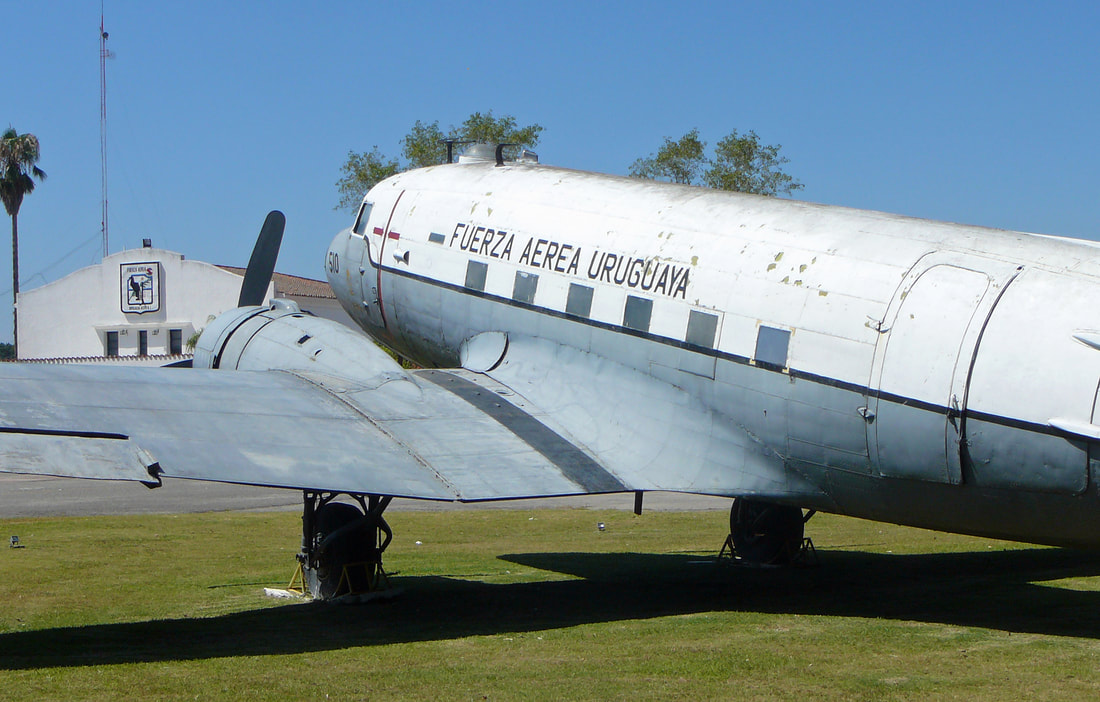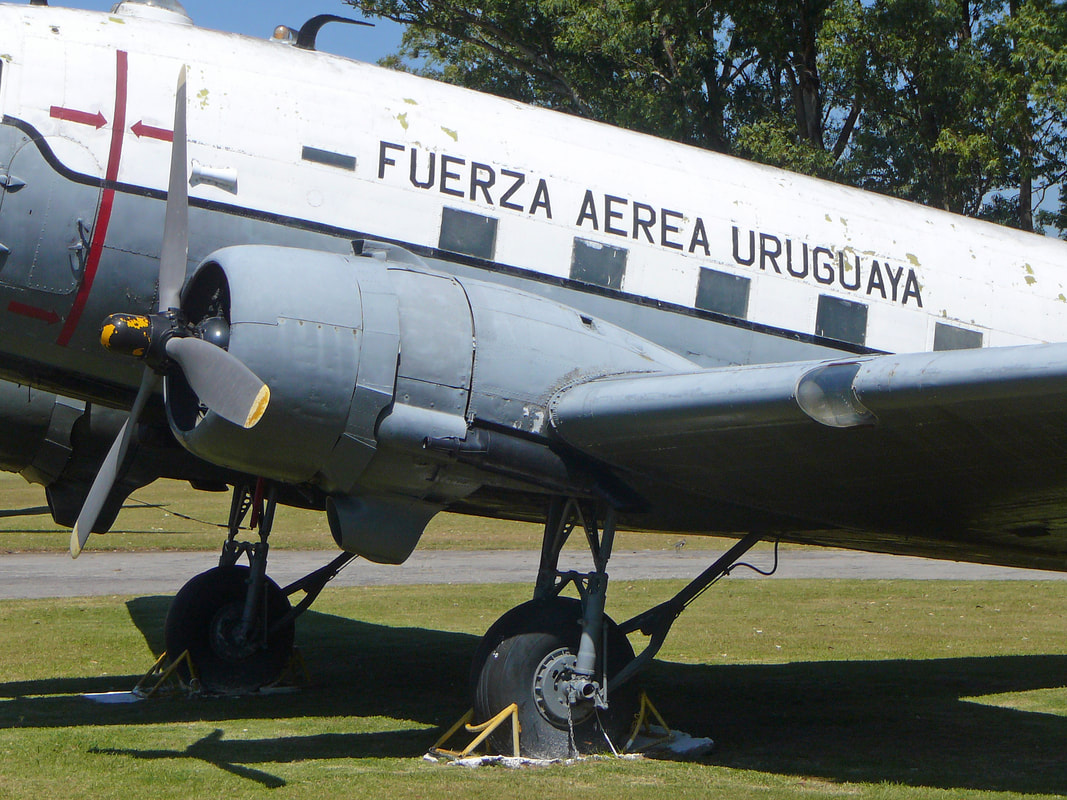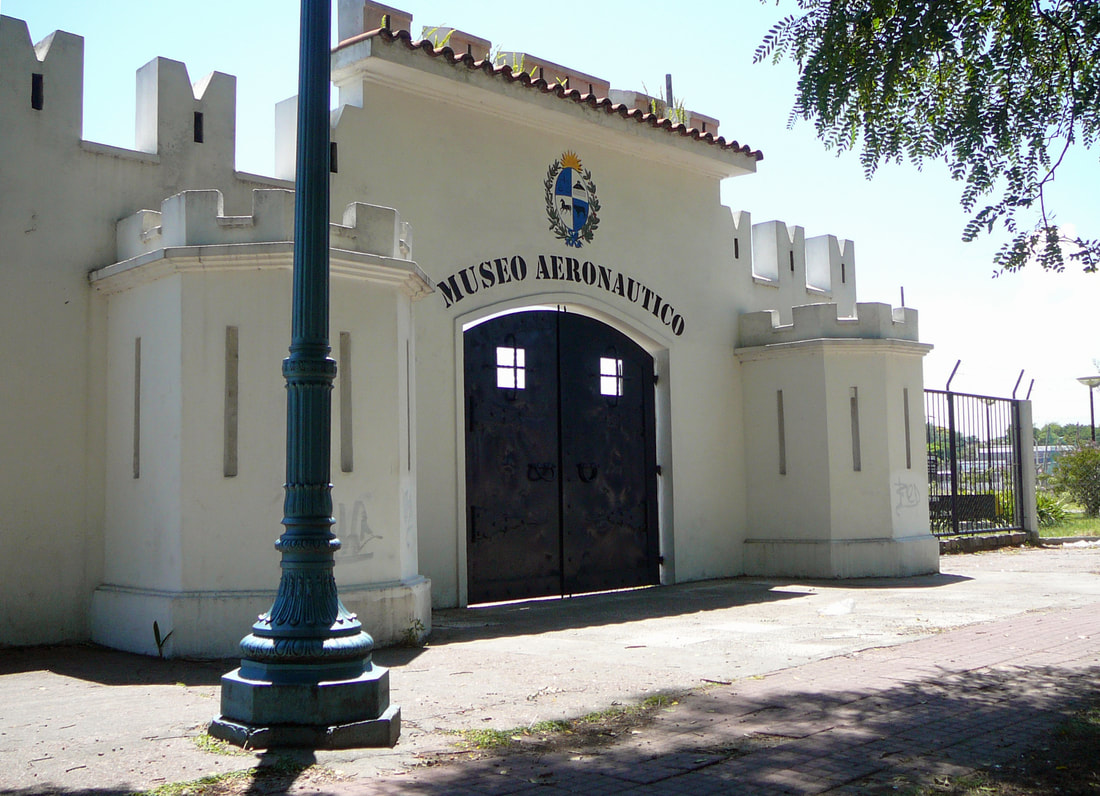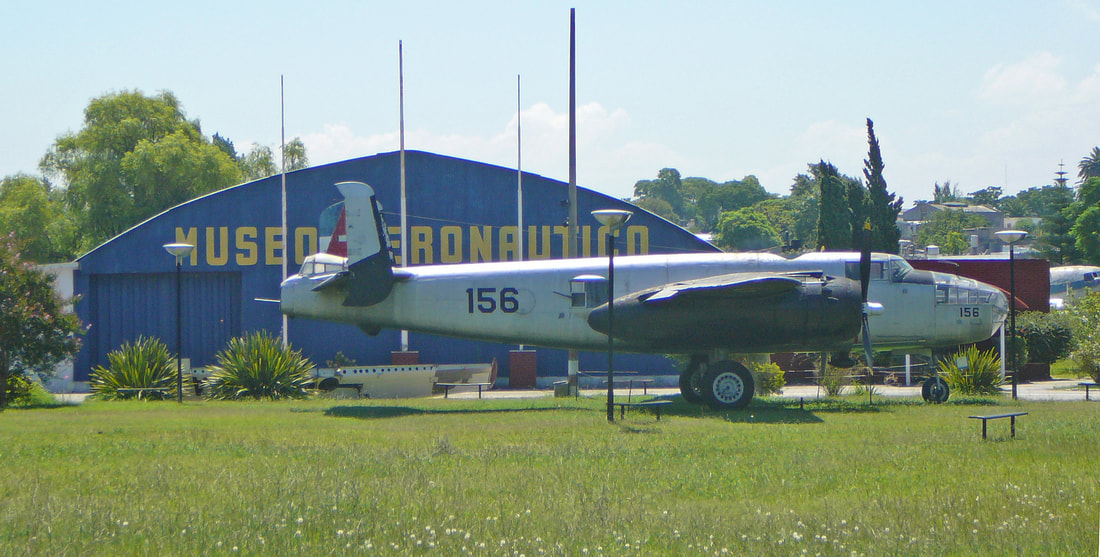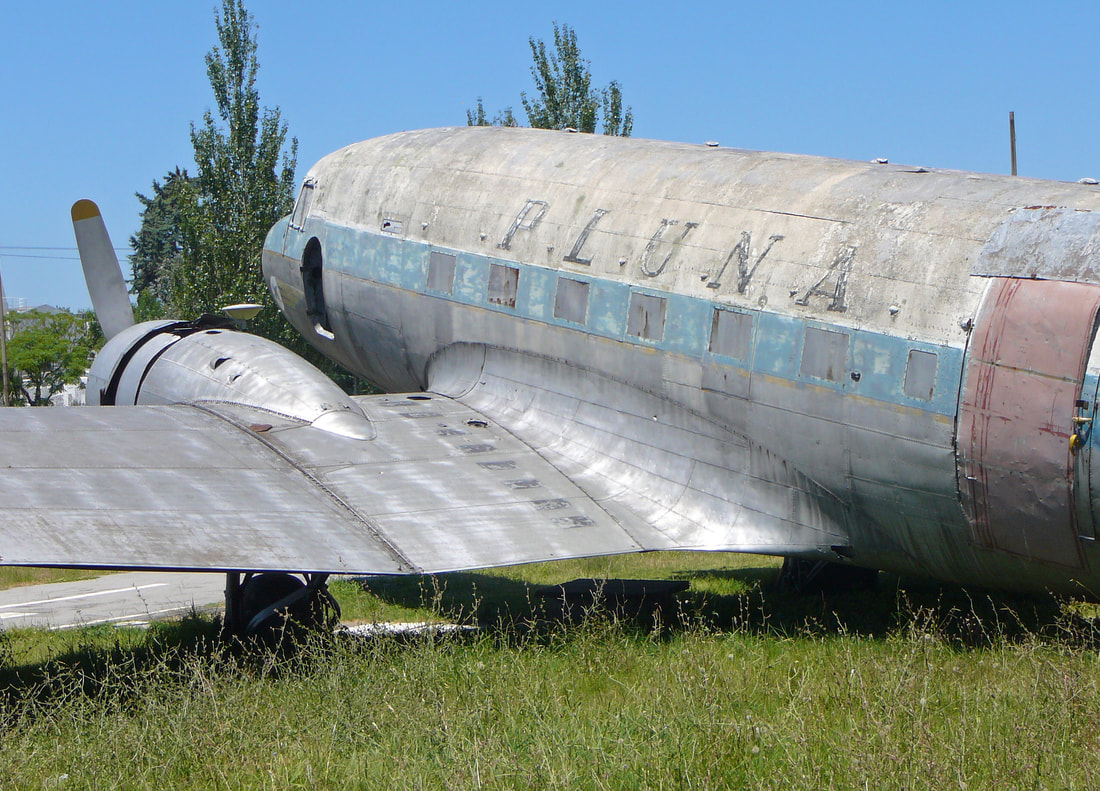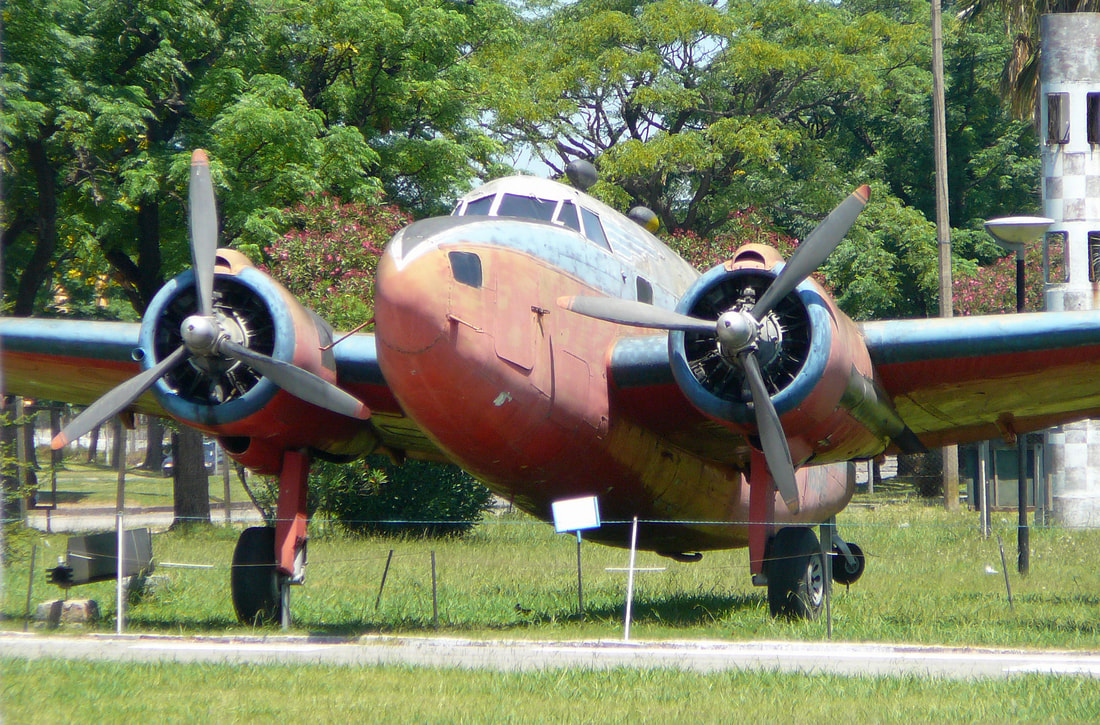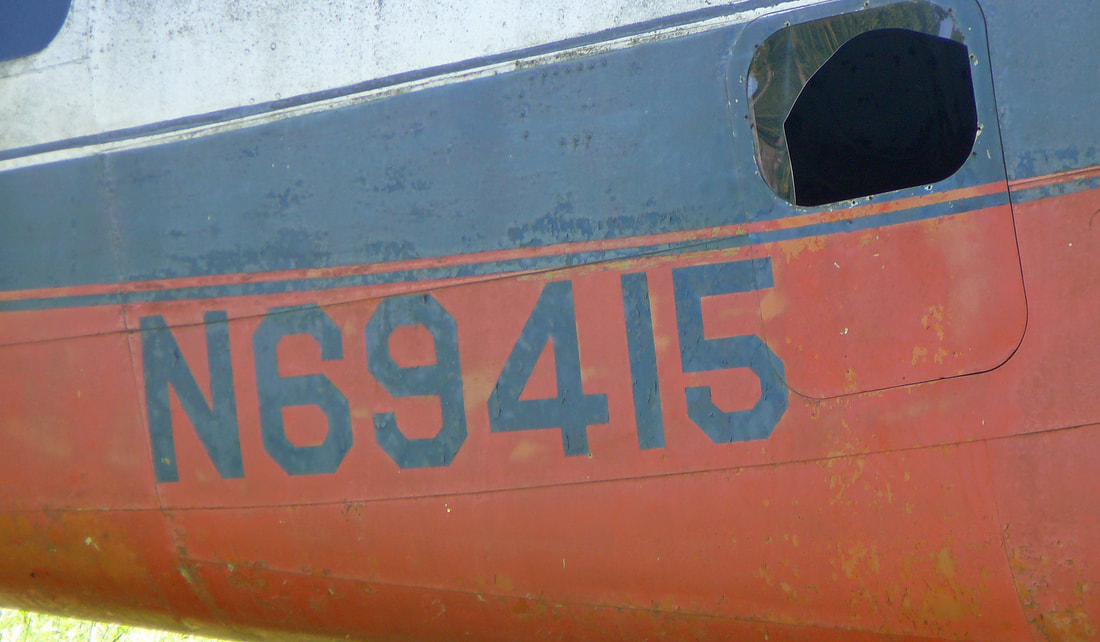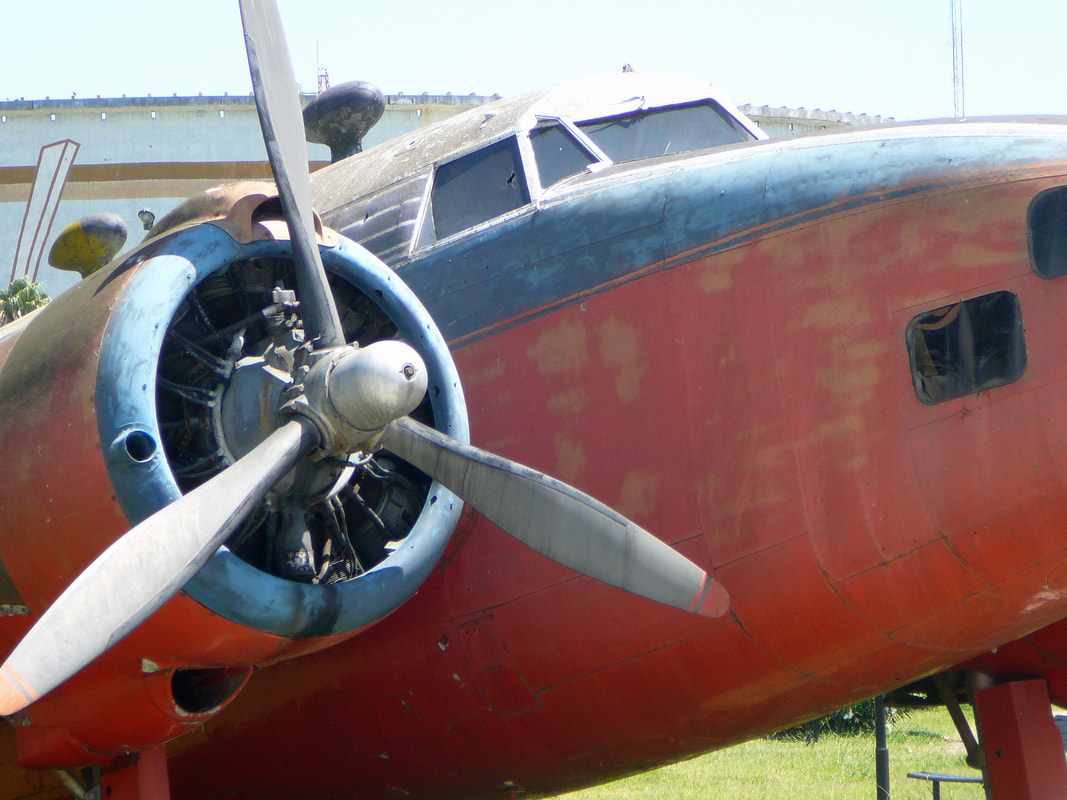Montevideo, Uruguay, 2013
By Jan Koppen
In January 2013, my girlfriend, our son and I, visited Argentina and Uruguay. I took the oppertunity to visit Montevideo, Carrasco Airport, Airbase en Aviation Museum.
Enjoy the pics and captions.
Enjoy the pics and captions.
In the background, Pluna Boeing 737-200Adv. CX-BON (ex Transavia PH-TSI) and CX-BOP (ex Transavia PH-TSB). Montevideo, January 2013.
PLUNA Líneas Aéreas Uruguayas S.A. was the flag carrier of Uruguay. It was headquartered in Carrasco, Montevideo and operated scheduled services within South America, as well as scheduled cargo and charter services from its hub at Carrasco International Airport. On 5 July 2012, the Uruguayan government decided to close the airline down and to liquidate it.
Pluna CRJ-900LR CX-CRG and her sisterships were line-up in a neat row, awaiting their future.
In September 2012, the auction of the seven Bombardier aircraft that belonged to the liquidated carrier was delayed until October 2012 as there were no bidders. Cosmo Airlines, a Spanish charter carrier, eventually purchased the seven aircraft. Regionally, the void created by PLUNA's collapse benefited foreign airlines on some routes.
CX-CRG is still (2020) active with GoJet Airlines and operating for United Express.
CX-CRG is still (2020) active with GoJet Airlines and operating for United Express.
Caught on camara, during her turn-around, is Buquebus Lineas Aereas (BQB) ATR-72 CX-JCL.
ATR-72, CX-JCL, is seen here ready to depart to yet another place in Buquebus regional network.
BQB Líneas Aéreas (BQB Airlines) was an airline based in Montevideo, Uruguay. Its main base was Carrasco International Airport. The airline was owned by the owner of Buquebus. The airline, which was considered the unofficial flag carrier of Uruguay, ceased operations in April 2015, after a crisis that began in 2014.
American Airlines Boeing 767-323(ER) N342AN.
In March 2020 she was ferried from Miami to Roswell, New Mexico for storage. In the background we see GOL Boeing 737-738 PR-GIE vacating to runway.
The long fuselage of American Airlines Boeing 767-323(ER) N342AN reflects the Uruguayan mid-afternoon light, as it is replenished with stores for its return flight from Montevideo to New York in January 2013.
Gods best Boeing, the 727 - this is Air Class Cargo, CX-CAR, a 200 freighter with 2-JT8-17 pod engines with big hush pipes. Her previous owners were; PSA, USair, Piedmont, ATA and DHL. In April 2014 she was withdrawn for use and parked at Montevideo.
Air Class, 1990 built, Fairchild SA227-C Swearingen Metro III, CX-CLS. The last years this Metro flew on behalf of DHL, connecting Montevideo and Asunción, Paraguay.
Fuerza Aerea Uruguaya Lockheed C-130B '591' wearing UN symbols. Ex USAF 61-971.
Fuerza Aerea Uruguaya CASA-Aviocar '535' sitting pretty at the Brigada Aerea 1 ramp.
Fuerza Aerea Uruguaya Embraer 110B '583' undergoing some maintenance on a sweltering military ramp.
FAU Lockheed C-130B Hercules '593', ex USAF 58-0744. Good ship. She hung-on till the end and was finally being scrapped. I'm not sure if she ever saw active service. She may have been purchased for parts for the other two C-130's in Uruguay's Air Force. Together with Westland Wessex
XT-673/074, this Hercules has been broken up into sections at Carrasco, Uruguay.
XT-673/074, this Hercules has been broken up into sections at Carrasco, Uruguay.
Fuerza Aerea Uruguaya - Base Aerea 1, is based at Carrasco Airport.
I got rewarded with bright sunshine on this lovely day in January 2013.
Fuerza Aerea Uruguaya Douglas C-47 'T.514', is seen here on display in the 'garden' of Fuerza Aerea Uruguaya Base Aereo 1.
Fuerza Aerea Uruguaya C-47 'T.514', came off the Oklahoma production-line as a C-47 in 1943, for delivery to the USAAF as 43-16138. After her military career in the USA, she was exported to Uruguay in 1961 and resumed her military work with the Uruguayan Air Force as T.514.
Fuerza Aerea Uruguaya sitting pretty under the intense Uruguayan sunshine in January 2013.
Fuerza Aerea Uruguaya FH-227D '572' is preserved at Montevideo, Base Aerea 1. Sistership '571' crashed on October 13, 1972 in the Andes. The well-known incident was later known as the Andes flight disaster.
The Fairchild F-27 and Fairchild Hiller FH-227 were versions of the Fokker F27 Friendship twin-engined turboprop passenger aircraft manufactured under license by Fairchild Hiller in the United States. The Fairchild F-27 was similar to the standard Fokker F27, while the FH-227 was an independently developed stretched version.
Grupo Simbólico de Transporte Aéreo 346.
En reconocimiento a las aeronaves, tripulacioneés y personal técnico de la Fuerza Aérea
que han hecho posible la presencia de Uruguay en la Antártida. Marzo 2003.
que han hecho posible la presencia de Uruguay en la Antártida. Marzo 2003.
Propliners from yesterday-years.
Fuerza Aerea Uruguaya C-47 'T.510', came off the Oklahoma production line as a C-47 in 1942, for delivery to the USAAF as 42-100558. After her military career in the USA, she was exported to Uruguay in 1950 and resumed her military work with the Uruguayan Air Force as T.510.
This beat-up old airplane flew many years for the Fuerza Aerea Uruguaya.
The bright colors of Fuerza Aerea Uruguaya C-47 serial '510' caught by the camera, on a lazy sun-drenched day at Montevideo, Carrasco.
Her paint is of poor quality, oxidized and shows excessive wear on her fuselage and control surfaces. Many chips and scratches are apparent and overall the aircraft needs painting. However, the paint is still protecting the aircraft surfaces a bit, but it looks poor.
Fuerza Aerea Uruguaya Westland Wessex HC Mk2 '070' at Montevideo, Carrasco in January 2013.
The Westland Wessex was a British-built turbine-powered development of the Sikorsky H-34. It was developed and produced under licence by Westland Aircraft (later Westland Helicopters). One of the main changes from Sikorsky's H-34 was the replacement of the piston-engine powerplant with a turboshaft engine. Early models were powered by a single Napier Gazelle engine, while later builds used a pair of de Havilland Gnome engines.
Fuerza Aerea Uruguaya Bell UH-01 Iroquois '069'.
Fuerza Aerea Uruguaya Wessex HC Mk2. 'XT-605 - 072'.
The Westland Wessex is turbine-powered by two de Havilland Gnome engines.
Museo Aeronautico is open to the public.
Fuerza Aerea Uruguaya North American B-25J '156', on a broiling hot Museo Aeronautico tarmac, in January 2013, is ex USAF.
Fuerza Aerea Uruguaya North American B-25J '156' is a longtime resident at Museo Aeronautico.
A classic cockpit view of the B-25 showing the tunnel through which the navigator crawls to the glazed nose section.
Mid-day sunshine glints off the lackluster aluminum fuselage of Fuerza Aerea Uruguaya North American B-25J '156'.
Fuerza Aerea Uruguaya Beechcraft AT-11 '101'.
A motley line-up of geriatric jet and prop hulks at the Museo Aeronautico, Montevideo, Urguguay.
Pluna DC-3 CX-BDB is a very scruffy and weathered DC-3.
This DC-3 was constructed as a C-47B-35-DK by Douglas at Oklahoma City, Oklahoma, USA. During 1944 she was taken on strength with the United States Army Air Force with serial 44-77060. The ship was transferred to the Royal Air Force with serial KN682 as a Dakota VI. After she was struck off charge, she went working for Hunting Clan as G-AMNL. During the 60's she was exported to Italy and became an asset of Itavia as I-TAVO. After her work in Italy she started a new adventure in South-America with Pluna as CX-BDB. Many years ago she was donated to the Museo Aeronautico at Montevideo Carrasco.
This old beauty is preserved in Museo Aeronautico, Montevideo. Unfortunately she is in a sorry state.
CX-BDB had faded paint and flat tires during my visit in January 2013.
Note; - The big faded old Pluna logo on her nose
"PLUNA", is an acronym for Primeras Líneas Uruguayas de Navegación Aérea.
Crying out for cosmetic attention.
Weathered, but still as good a looker as the day she rolled off the Oklahoma production-line.
Shooting Star ‘213’ warms her natural metal finish in the strong Uruguayan sunshine.
At least 18 F-80C's were delivered to the FUA in 1958. They were withdrawn from use in 1972.
Fuerza Aerea Uruguaya T-33A '203' is seen here basking in the intense Uraguayan sun.
In 1956, Uruguay entered the jet age with the arrival of four Lockheed T-33 jet trainers. Training on these aircraft, Uruguayan pilots would then go on to fly Lockheed F-80 Shooting Star jet fighters. Both aircraft operated with Aviation Group No. 2 in Carrasco.
The airplane's paint has faded extremely due to ultra-violet exposure.
Broad-shouldered Lodestar L-18 N69415, was seized by authorities on September 09, 1969.
The Lodestar has always been an eye-catching private propliner.
The Lodestar was powered by two 900hp Pratt & Whitney R-1690-S1E2-G Hornet piston-engines.
Dirt has gathered in all the panel lines showing most clearly around the nose and engine cowlings.
The Howard 400 & 500's were the ultimate piston Bizplanes.
- The End -

